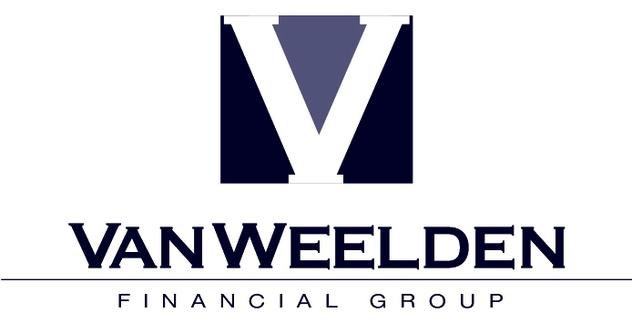
A Truly Holistic Approach
Whether collaborating with our team internally or working with your established professional relationships, we lead with the development of a truly holistic financial plan, not blanket product selection or investment recommendations.
As a Comprehensive Wealth Advisor
We help our clients identify and answer critical questions, such as:
How do I reduce the likelihood of running out of money in retirement?
What strategies are available to help reduce the effect of market volatility on my portfolio?
How can I reduce the tax burden on my retirement income?
How do I ensure my estate will not be decimated by long-term healthcare costs?
How do I provide for my spouse or loved ones after my passing?
How can I fund my grandchild’s college, gifts to charity, or other unique objective?
Often times, financial professionals operate in silos, without a full picture of your financial needs, goals, and resources. As a comprehensive wealth advisor, our approach enables us to analyze and advise on your entire financial situation. This way, we can help maximize income throughout retirement by also controlling taxes, fees, and risk within our recommendations.
Cash Flow Planning
We’d like to introduce you to the three key concepts of Cash Flow Planning: The Cashflow Pyramid; The Income Gap; Income Stability Ratio.
The Cash Flow Pyramid is a depiction of the different levels of confidence we can have with the different kinds of cash flow we might receive in retirement.
The most secure types of income are at the bottom of the pyramid. Those are guaranteed, or said another way, promise-based. These include things like Social Security, Pensions, Wages, Guaranteed Income Annuities, Charitable Annuities, Guaranteed Income Life Insurance, Reverse Mortgages and Rental Income. A good way to know if a source of cash flow falls into this category is to ask yourself if there is a guarantee or promise in place ensuring a specific amount of income so long as you perform your duties under the contract.
Our list is not exhaustive, but it represents the most common guaranteed income sources for most retirees.
At first glance, the key would seem to be to have as much of your income as possible come from the bottom level of the pyramid. However, this isn’t always feasible, or even wise, because you need to balance your need for stable, increasing, lifetime income, with your need for flexibility and liquidity as the years go by.
Typically, there is a cost associated with any guarantee. For example, the most stable sources of income usually aren’t also completely liquid – like a Pension or Social Security check. Those come with a high level of assurance you’ll get the income, but there is no liquid pool of money you can access whenever we want. There are exceptions to this rule that provide income guaranteed as well as liquidity, but those are the exceptions rather than the rule.
The second level of the pyramid is cash flow that’s perceived to be very stable, but not guaranteed. We have a pretty high level of confidence that it will be there when we need it. These would be investments or savings vehicles that are very conservative in nature, either because of the underlying investment or vehicle itself or because of the way they are managed.
Examples might be a short-term bond or certain defensively tactical investment strategies. As a wealth advisor, I remind my clients that the value and associated income stream of both will fluctuate, but they tend to be much more stable than, say, that of an individual stock or mutual fund – which leads us to level three.
The top level, variable, refers to assets that have significantly more potential for volatility, both in their underlying value and also in their associated cash flow. Oftentimes these are the investments you may have grown most accustomed to during the accumulation phase of your lifetime, because you could tolerate more volatility and had little to no need for income. Thanks to your annual salary. These would be things like stocks, bonds, mutual funds, ETFs, variable annuities, subaccounts in our 401(k)s or other retirement plans, and the like.
One final, important thing before we move on: these levels are not subjective. As a wealth advisor, I often hear one person can’t say their long-term bond or stock dividend feels like it’s in level 1, another that it feels like it’s in level 2, and another level three. Just because your experience with something has been a certain way in the past, doesn’t mean you can be certain it will always be that way. Your assurance is either intrinsic to the underlying asset or it isn’t. Like real estate, which always goes up, right? Until it doesn’t. There are far too many examples of this that I could share with you from my past twenty years of doing this, but suffice it to say, this is not a subjective exercise.
So the whole purpose of the Cash Flow Pyramid is to help you better understand how stable & predictable your income sources are, which brings us to the second concept I want to introduce to you… The Income Gap.
The Income Gap is simply the difference, in any given year, between the amount of money you are guaranteed to receive and the amount you actually need. In other words, the difference between what you’re getting from the bottom level of the pyramid and what your total need is.
So the income gap is how much income you’ll need each year from non-guaranteed sources – either from level two or three. This is why it’s so important to have a plan that details the sources of your income for each and every year of your plan. Not just an estimation based on your overall portfolio, which is what most people have. I can’t imagine retiring with something like that as my only security.
Now once you know the size of your income gap for each and every year of your anticipated lifetime, you can then calculate what we call your Income Stability Ratio. This is a ratio, or percentage, of how much of your total lifetime income need will be met by guaranteed, or promise-based, sources, versus what will rely on the performance of your investments.
In a perfect world, we would all like to have 100% of our income to be guaranteed. But realistically, that’s not typically possible if you want to balance your cash flow needs with your desire for liquidity and flexibility over time. Unless you have far more money than you’ll ever spend. Even then, no matter how large your net worth, you still may have a very low Income Stability Ratio, unless you purposefully reposition your assets as you make the transition into retirement.
As a wealth advisor, I typically recommend you shoot for an Income Stability Ratio of about 80%. Some people want it to be higher than that, and some are ok with it a bit lower, but my experience says 80% is a good target. This means that only 20% of your lifetime income would be dependent on the performance of your investments. And at times like these, a high Income Stability Ratio feels really good.
In the end, the basic idea is to allocate the minimum amount of assets toward generating the maximum amount of cash flow, so you can retain as much separate, “discretionary” assets as possible, which can be used for something other than your required monthly income.
You want to try and avoid consuming the assets that are generating your income. That would be like taking a bite out of the goose that was laying your golden eggs. Instead, you want to distinguish between the assets that are generating your monthly income and those that are available to use on a discretionary basis – hopefully for fun things, but also in case life throws you a curve at some point.
This way, when and if you dip into those discretionary assets, you won’t be placing an added burden on the assets that are generating your monthly income. So the phrase of the day for today is Income Stability Ratio. This will be a huge key to your success.

“We measure success not by some arbitrary statistic, but rather by our clients’ ability to achieve their personal retirement objectives.”

